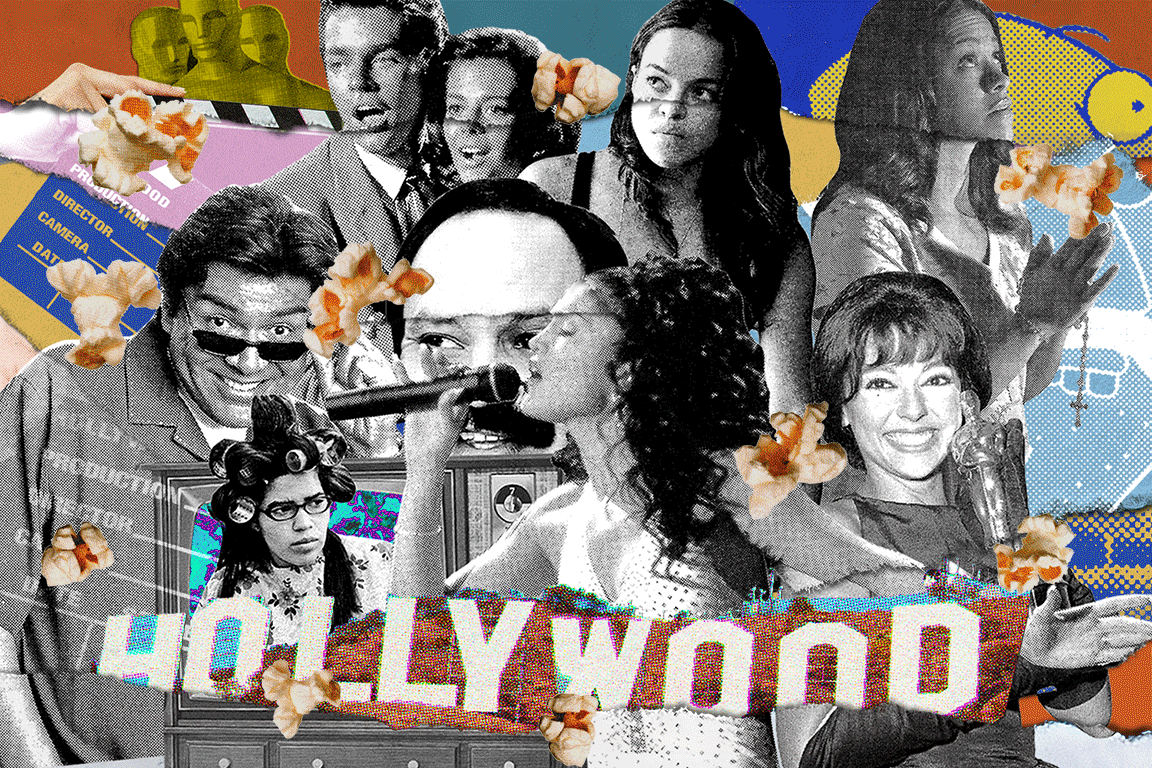The biggest entertainment stories
Get our big stories about Hollywood, film, television, music, arts, culture and more right in your inbox as soon as they publish.
You may occasionally receive promotional content from the Los Angeles Times.

Hollywood has failed Latinos for more than 100 years — from the “greaser” tropes introduced in the earliest days of film by D.W. Griffith to a profound lack of Latino-created shows on Netflix and other streaming platforms compared to other underrepresented groups. Even “In the Heights,” the rare big-budget Hollywood movie to tell a Latino story from Latino creators and a mostly Latino cast, had issues with weak Afro-Latinx representation. But there is a new push by performers and creators to change the narrative. We asked a team of Times journalists to examine the complicated history of Latinos in Hollywood and the actions being taken to increase their representation, which remains stubbornly low. Reporters also tackled murky questions about what kind of representation Latinos lack or seek, and how some of their personal ventures in the industry affected their view of it. Read on for a fascinating look at the Latino culture gap and why it matters.
Hollywood’s history with Latino representation is a muddy mess. Why even Washington politicians are taking action.
Part of a growing cadre of Latino writers speaking out, staffers say the project came with a low budget, poor pay and a brutal schedule.
Rehashes such as “Charmed” and “One Day at a Time” put Latinos on TV. But narratives wholly shaped by Latino points of view are much harder to find
Expectations are big for “In the Heights,” the rare Hollywood blockbuster to tell a Latino story from Latino creators and a mostly Latino cast. At this watershed moment, we look back on the complicated history of Latinos in Hollywood with a few significant highs and lows.
They’re newlyweds from the same Jalisco town. He moved to L.A. at 2; she came three years ago. What’s on their TV? Netflix in English or Pantaya in Spanish?
A Hollywood rookie and an Oscar-nominated producer trade notes on the hurdles they’ve encountered trying to bring Latino stories to the screen.
Rep. Joaquin Castro wants to rethink film subsidies if studios don’t improve Latino representation: “We cannot subsidize our own exclusion.”
The Times has published a package on Hollywood’s Latino culture gap. We discuss this trend with legend Edward James Olmos and beloved star Cristela Alonzo.
My last chance at Hollywood fame was going to live or die on Olvera Street. But overcoming the tropes wasn’t going to be easy.
A Times analysis has found that Latino representation in film and TV has stagnated for a decade-plus, even as Latinos’ share of the population has grown.
Latinx audiences, key to the success of “Fast and Furious,” are Hollywood’s most dependable customers. Now they’re helping movie theaters bounce back after COVID-19. Will they be rewarded?
Hollywood has often limited Latino stories to Boyle Heights and East L.A. Now, two Netflix series are imagining how to broaden pop culture’s horizons.
Luis Fonsi, Shakira, Kelly Rowland and Solange Knowles appeared on Nickelodeon’s “Taina,” a turning point for kids TV with a pivotal role for young Latinas.
Bodega coffee and raps about gentrification — we reflect on everything riding on Lin-Manuel Miranda’s cultural unicorn
Netflix, HBO Max and others are investing in Spanish-language content to target U.S. Latinos and Latin American markets.
Actors, writers, directors and executives discuss the state of Latino representation in film and TV with The Times.
About this project
The biggest entertainment stories
Get our big stories about Hollywood, film, television, music, arts, culture and more right in your inbox as soon as they publish.
You may occasionally receive promotional content from the Los Angeles Times.